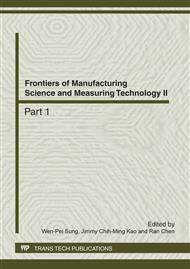p.576
p.582
p.586
p.591
p.597
p.601
p.606
p.611
p.615
Effects of Thermal Gradient and Solidification Time on Porosity Content of A201 Aluminum Alloy Castings
Abstract:
The purpose of the present study was to discuss the effects of local solidification time and thermal gradient on porosity content in long solidification range A201 aluminum alloy plate castings. With systematic change in the riser size, together with variation of thickness and length, were cast in different kinds of molds. The sand molds with end chill for the plate castings were made of 100% silica sand. The porosity content of A201 aluminum alloy was affected by the local solidification time and thermal gradient at same time in this study. The correlation between porosity content and any individual thermal parameter is found to be split into 2 bands, each being associated with one of the two thicknesses of plate castings. The higher the thermal gradient, the lower the porosity content was measured in the A201 aluminum alloy plate casting. And high thermal gradient with short solidification time will get lower porosity content in aluminum alloy castings
Info:
Periodical:
Pages:
597-600
Citation:
Online since:
April 2012
Authors:
Price:
Сopyright:
© 2012 Trans Tech Publications Ltd. All Rights Reserved
Share:
Citation:


